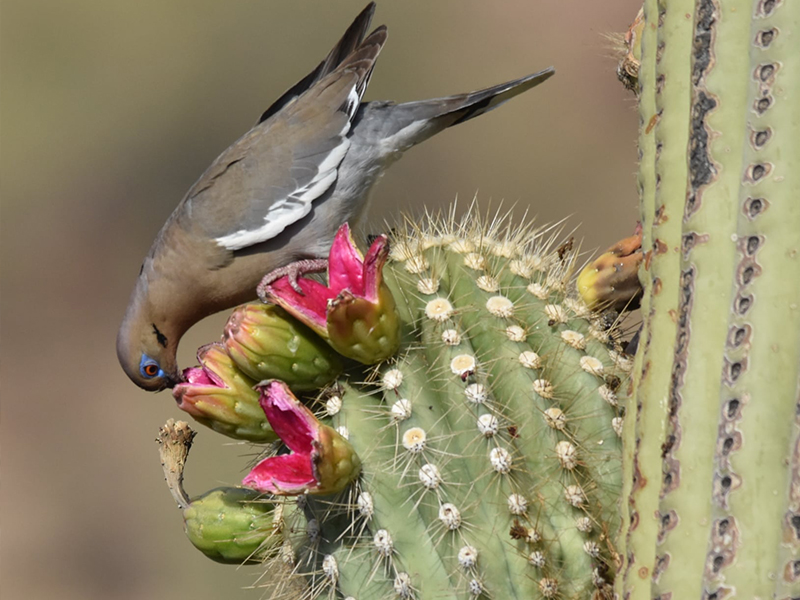Photo by Michael Searcy
Ripening in the hottest, driest time of the year, saguaro fruit provide important moisture and nutrition to animals and insects in the Sonoran Desert before the summer monsoon rains.
With each saguaro able to produce an average of 150 fruit, for a few months of the year this cactus is a veritable grocery store in the desert. High atop the saguaro’s branches, the succulent fruit splits into three or four sections in late May to late June, exposing the dark red pulp and a cluster of up to 3,500 seeds.
Birds and bats eat the pulp and seeds of the fruit on the cactus, while on the desert floor coyotes and other mammals feast on the fallen fruit. People indigenous to the Sonoran Desert such as the River Pima, Tohono O’odham, and Southeastern Yavapai depended on the saguaro as a food source in the hot, dry period preceding monsoon rains.
Saguaro fruit tastes very sweet and the seeds, which are high in protein and fats, have a nutlike flavor. The fruit can be eaten both raw and cooked, processed into syrup and jam, and the pulp dried into cakes. The seeds are eaten raw or dried and ground into flour. Juice is made into both alcoholic and nonalcoholic drinks. Today, members of the O’odham and Piipaash nations harvest saguaro fruit, continuing a centuries old practice and affirming the place of this iconic cactus in their lives.
Resources: O’odham Action News, Baidaj Harvesting, by Dodie Manuel August 5, 2020; Food and Plants of the Sonoran Desert by Wendy C. Hodgson; The Saguaro Cactus, a Natural History by David Yetman, Alberto Burquez, Kevin Hultine, and Michael Sanderson; and A Natural History of the Sonoran Desert, 2nd Edition, edited by Mark A. Dimmitt, Patricia Wentworth Comus, and Linda M. Brewer.

